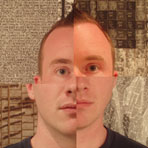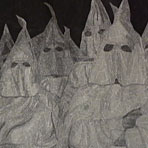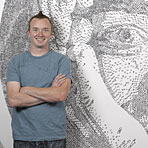


There is a story between Transformers and me that I cannot but share with you.
When I was in Grade 4 in 1988, the Transformers appeared. It's no doubt a precious house to a child, especially in an age of entertainment-lacking. I'm lost and enjoying myself among the sounds of transforming, KUKUKAKA. I got accustomed to every characters and every events.
Every Saturday evening, watching Transforming program was the most precious time I was longing for during the week. I would like to buy everything regarding Transformers. It's a pity that only cheapest pasters I could afford. Each time I could stand for a long while to watch transformer toys before small booth.
Later, a classmate took a toy to school. Hasbro's Motormaster. It was said that it was very expensive, compared to other kinds of toys, for it was bought from Shanghai city.
Obviously, I would be no other than admiring and jealousness.
However, other toys cannot be mentioned in the same breath. Because its materials, style is far beyond to compare. Even I was shocked that the logo of Transformer could change its color, which is the clearest memory on my mind till now. I cannot believe that a transformer toy can be made in such an excellent level.
Chairman Mao had said that people can achieve everything he wants in case of his courage.
Later I got an idea to make one by myself.
At the very beginning, I collected boxes which were used to save pencil-lead for it could be easily reached and adhibitted, and its suitable shape, transparency. I tried to make one. It was a racing car or other kind of toy. I cannot remember it exactly. It’s not bad. Anyhow, it's a very important experience by which I become more confident. I have to choose other materials to make other toys, like Starscream, Grimlock, which have more arcs.
Then I turn to use other materials. This time I use ordinary paper. It happens that there are many shell-paper on hands.
Like any other hand-made activities, I image a picture body outspread, and then draw it on paper, and cut it down and paste it. Finally put all parts together. From which I get it more and more clear that thinking is prior to making.
To make a transformer, I have to learn it how to transform at first,
and set it down every parts and every joints which will be used to transform. Taking all into consideration, and solve problems one by one, rather than focusing on a detailed one. Through many times trying, the Starscream comes into being completely. “Cool", the first word appears in my mind.(Thank Great Wall for translating

)
Freezing Enthusiasm has been ignited again. People can be easily influenced, but something in one's heart cannot be changed. The first time I saw the foreshow of the transformer, I felt that my feeling comes back. The moment I enter into the cinema, I feel that my dream will soon come into true. According to familiar names, strange faces, classical actor's lines, and fashionable and brand-new Camoro, I exert myself to recall things in 1988. Something just appears and then dies away silently. People always touched by recalling. I'm touched and excited during watching film. It's time to do something to express my true feelings. For I know that I'm still passionate.
I’m idling at home for some days. Since the film show, I'm wondering to do something. Once in a shopping, I was attracted by egg-pie. The largely superficial yellow color looks like car painting. Later I pay more attention to yellow packaging paper, and then find a satisfied one. At that time, I think it might be useful when making my bee. No matter I enjoy it or not, I buy it only in the aim at collecting its packaging paper. (Some pictures was added later, for I did not take a camera before making it.)

Tools photo, totally prepare to make by hands. Compass is old and leaves one leg. Without any hesitation, it has been thrown into trash box. It’s a pity I cannot find my T square. Otherwise, it will look like a little bit more professional.

Bond photo

Do not look down upon snap fastener(button?maybe you
have never seen it that was popular in China ten years ago) . All joints will depend on it.

Moon-cake box will be brought to play. It is strong enough to be used as framework.

Main material is white paperboard, both-sides. Other supplements are chopsticks, popsicle sticks, the core of ball-point pen, clew, plastic spring, etc.
All materials are prepared. That Searching data, sketching, is useful to understand the whole structure. The process is most important. All the reference pictures come from internet. Most of them are face-side and only one is back-side, and not clear. I have no way but use my mind to image. (Later I find a clear back-side picture, and find that some is wrongly made. It’s very regret that it has been pieced together. I only amend some parts. And let others alone.) After having studied the film edition bee thoroughly, I find that the procedure of transformation is very complicated, even some parts has taken place shape-changing. Whereupon, I give up the idea of shape-changing, and pay more attention to its mobility.

In July 15, I begin to make it. According to layout, the first part would be its head.
Then the head is here.

For its complex shape, the framework is absolutely necessarily. It's upper limbs. A little bit roughness.

It’s leg. They seem thin and weak. (Later it become no use for it cannot support its weight. And I have to re-design one.)
On July 21, some accessories have been made.

On July 25, the chest is molding. And some parts of the back

On July 28, arms complete.



On July 29, watching film again, to check its structure
On July 31, re-make the waist. combined with the chest, can be turned in three directions X, Y, Z. The arms most likely finished. (The back is under installing. Some parts are unknown.)

Aug. 2, Legs

Aug. 3, Legs complete, install.

Aug. 6, it is cruses. In order to support the most parts of its weight, chopsticks have been used.

Aug. 7, try the proportion. The bee has to lie down before the complete of cruses.

Aug. 8

Aug. 10, legs complete
 assemble
assemble, the last part is the back

Aug. 11, Mission Accomplished



It eventually comes out. There are about more than 60 movable joints, 36 cm height. Using one AO paperboard, besides, I have to enjoy five all stra of KFC, together with two boxes of egg-pie, four bottle of Tai-zi milk. All what I want to express is in the BUMBLE BEE.This time, while making the model, I have no idea of keep designs. All I have done is draw directly on paper. So I am very sorry that there is no any desigins. But next time, I will note all the details as possible as I can. Special thanks to fatbaby.Thank Great Wall for translating

.
To re-paste it, please note my blog address: http://wonderdasher.blog.sohu.com/







 )
)


























